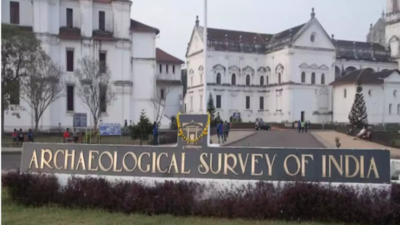- News
- ASI to excavate Cabo de Rama fort in search of Kadamba-era evidence
ASI to excavate Cabo de Rama fort in search of Kadamba-era evidence
Panaji: The Archaeological Survey of India (ASI), Goa circle, is preparing to begin excavation work at Cabo de Rama fort within the next week. It suspects the presence of an archaeological site in the area dating back to the Kadamba period.
“This initial excavation aims to assess the site’s potential, with further, more extensive excavations planned after the monsoon based on the initial findings,” superintending archaeologist holding additional charge of ASI, Goa circle, Abhijit Ambekar, told TOI.
Jose Nicolau da Fonseca writes in ‘An Historical and Archaeological Sketch of the City of Goa’ that the Cabo de Rama fort fell into the hands of the Portuguese during the administration of the Count of Ega, on June 1, 1763. “Besides the military barracks, it contains a chapel and quarters for the use of the commandant and other officers,” he writes. His book sheds some light on the ruins that lie within the fort. “Within its precincts is to be seen a quadrangle well, while in its vicinity flow two springs. One of these lies at a short distance from the fortress and has, according to an official report, two stone spouts which issue water of unequal temperature — the cold being used for drinking and the more tepid, which is said to be sulphureous, for bathing people suffering from cutaneous diseases, especially during the hot season.”
History enthusiast Sanjeev Sardesai said, “There is a well-built lake which is now silted, lying inside the fort, aside from which carved idols are kept. This tells us that there was some type of structure over there and it could have been possible that the idols were immersed there,” he said, adding that the artefacts need to be dated to confirm if they are from the Kadamba age.

Archaeological Survey of India (ASI)

About the Author
Nida SayedEnd of Article
Follow Us On Social Media








